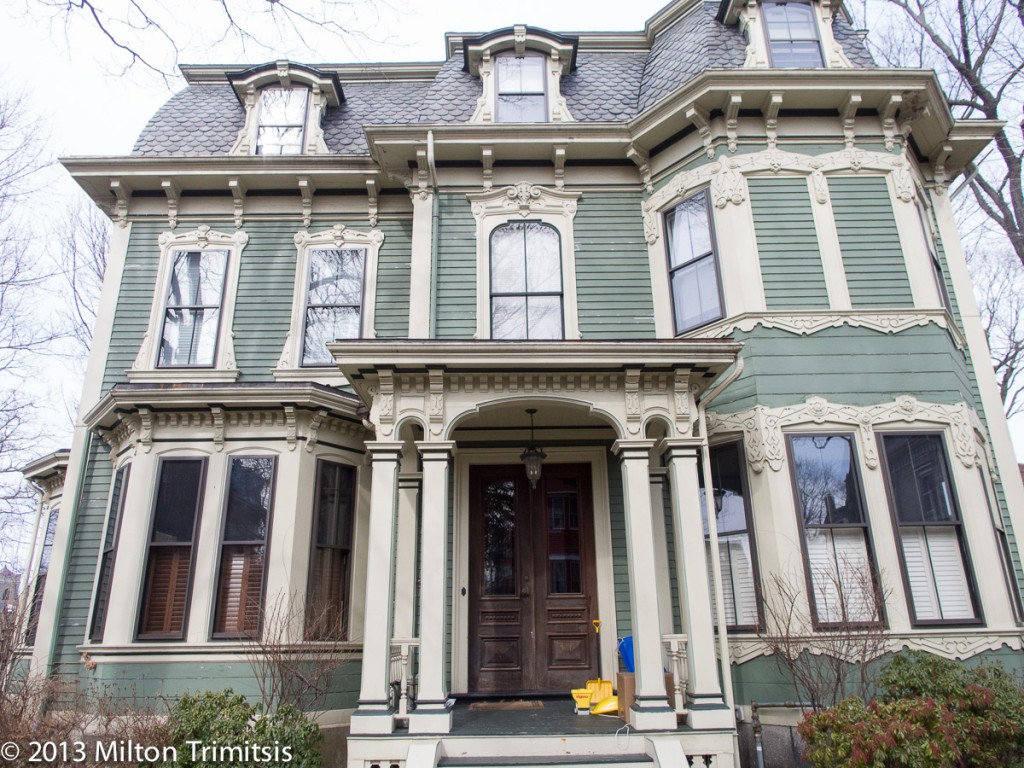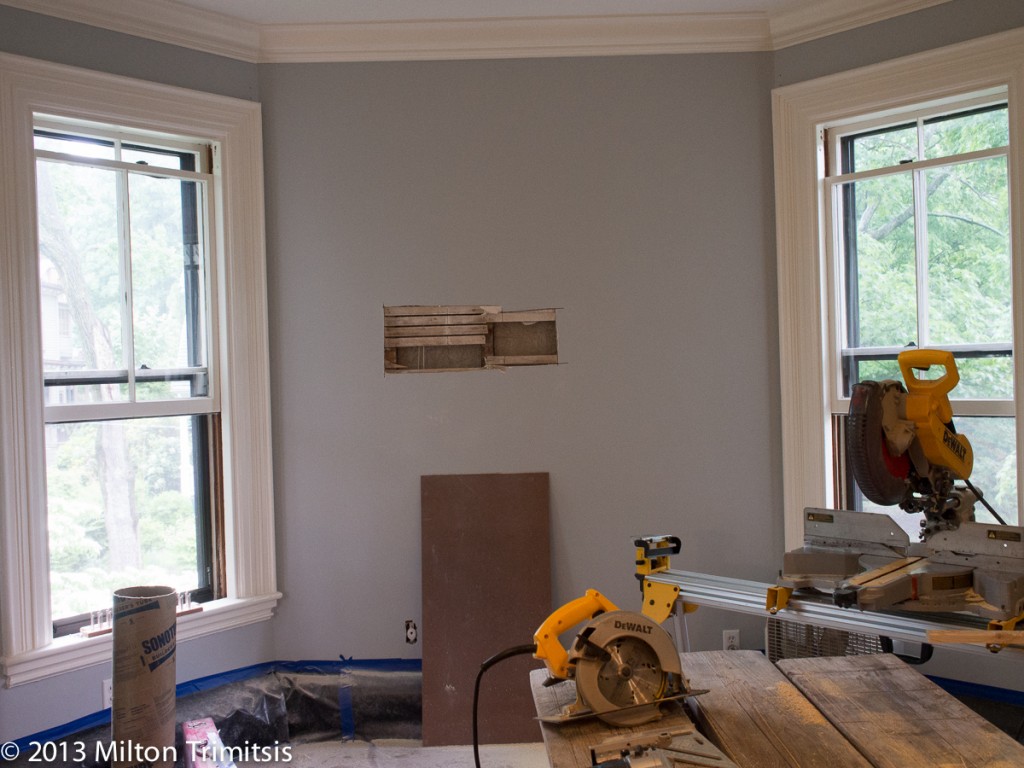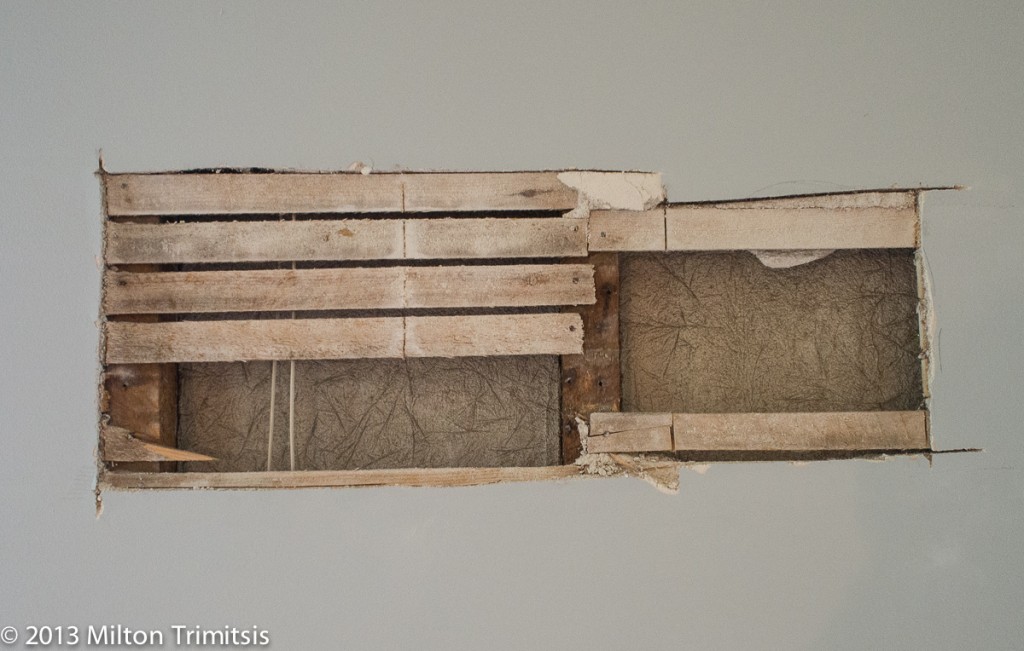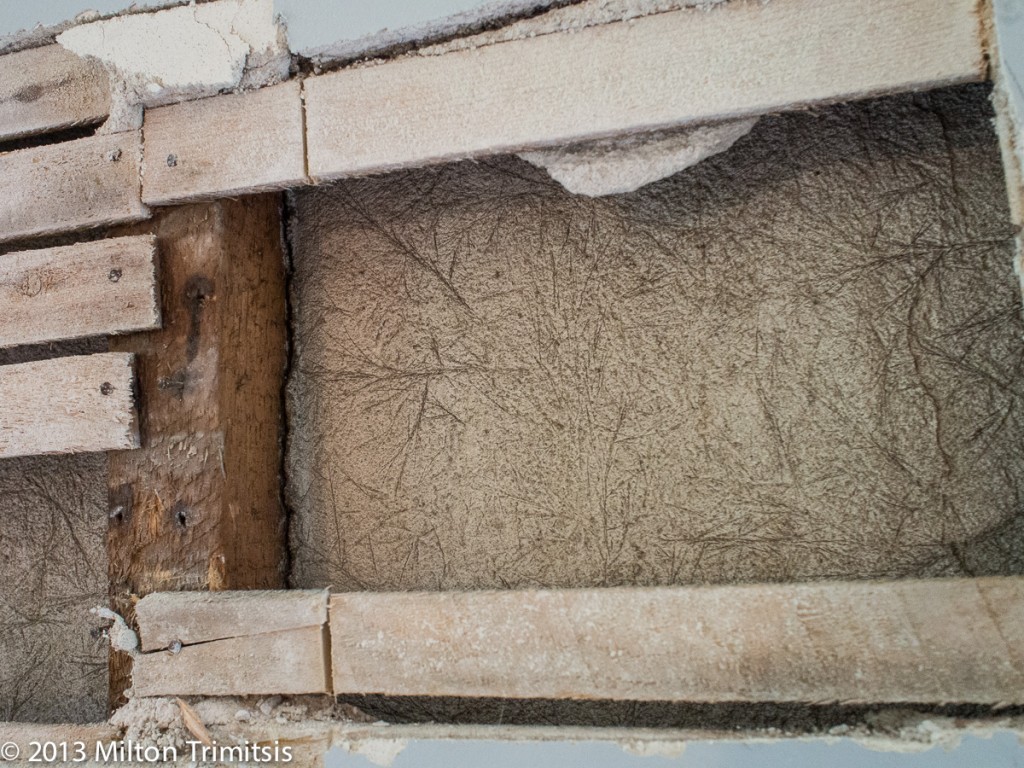Lost the bet
Posted on 8 June 2013
Starting a new project is fun and challenging on many fronts, but one of my favorite parts is developing intimacy with an older building, starting to discover its quirks and secrets. We’ve just begun work on a magnificent Victorian in Boston; the front façade is voluptuously ornate, with no less than six different styles of window trim. Notably odd, though, is the fact that two of the windows are missing — filled in with clapboards.

When our clients bought the house a few years ago, they thought this was pretty puzzling. They assumed that someone with a limited respect for the house’s history had taken a shortcut during an earlier renovation, and they were hoping to restore the windows some day.
As the architect and I got going on the current renovation, we both told the clients that we felt comfortable betting money or reputation that we would find the original window frames inside the wall. It would be a relatively straightforward project to remove the infilling clapboards, cut away the plaster covering the windows on the inside, and install new sashes, bringing the house back to its original form.
Hmmmm. Today we made a little observation hole on the inside of the wall where the windows had been.
Not only did we not find the window boxes we were expecting, but the hole revealed old-looking studs infilled with a schmeer of horsehair plaster.

The coat of plaster inside the wall, applied to the interior face of the sheathing, is a detail we regularly see in houses built before the 20th century. I’ve understood it to be an attempt to stop drafts in an era before effective insulating materials had been developed. Unless someone had gone to extraordinary lengths to perpetrate a cruel hoax on us, the windows had never been there.
Tagged: horsehair plaster, mystery, victorian, windows
